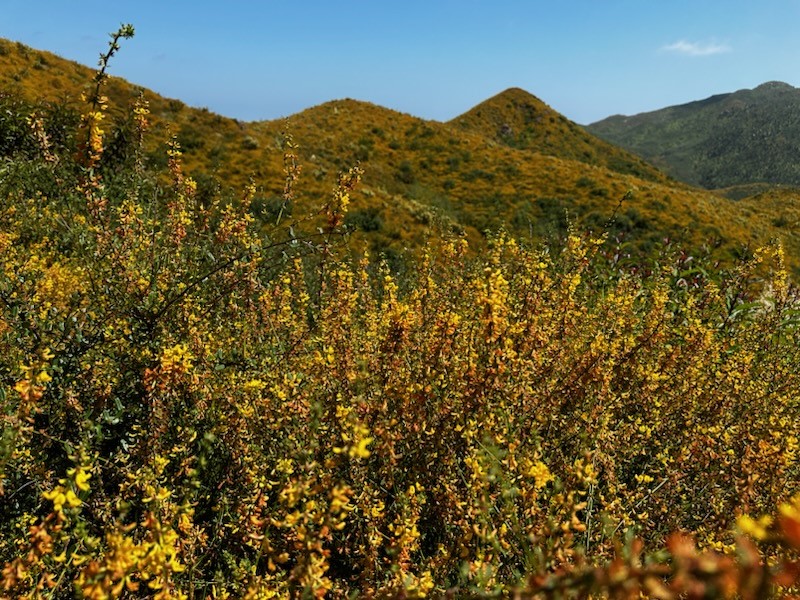News Release

National Park Service
|
Subscribe
|
Contact: Ana Beatriz Cholo, 805-750-9356
THOUSAND OAKS, Calif.— According to local National Park Service biologists, Mother Nature has extended the spring bloom season in the Santa Monica Mountains due to last winter's abundant rains. They've been gushing about how native blooms will uncharacteristically extend into July.
"It's amazing! There have been incredible blooms of California broom, also known as common deerweed," said Joey Algiers, a restoration ecologist at Santa Monica Mountains National Recreation Area. "It's incredible!"
Other prolific blooms, primarily perennials, include canyon sunflower, chamise, three types of mariposa lilies, and various species of Dudleya, which are often found clinging to rock walls, as well as some annuals like California poppies, phacelias, and different species of clarkia (farewell-to-spring).
It is still possible to spot these blooms in the lower to mid-elevation areas, which include Malibu Creek State Park, the Backbone Trail, Charmlee Wilderness Park, and between Kanan Dume Road and Encinal Canyon Road.
Typically, at this time of year, they’re more restricted to higher elevations, like in the Circle X Ranch area near Sandstone Peak, the highest elevation in the Santa Monica Mountains. This year, visitors can delight in the wildflowers at the higher elevations well into July, biologists say.
Almost five years after the 2018 Woolsey Fire, shrubs are continuing to make a strong recovery. Biologists say California broom is the one of the first to typically appear.
"Usually, after a wildfire, the environment will go through a series of different plants, starting with fire-following herbs," Algiers said.
"This is a natural process that we're seeing now some years after the fire. The California broom is doing what it's supposed to be doing, and it's an important plant for wildlife. It’s a great pollinator plant for our native bees and butterflies, and deer love to eat this plant."
Initially, biologists expected peak blooms to occur in April or May this year. Instead, it peaked in May and June.
"Across the board, we got these late bloomers," said park biologist Mark Mendelsohn, who recently documented 185 different plant species in just one team’s 2-3-mile hike through a recently protected parkland. "We got lots of things later than we typically do, and we think that's because of the cloudy and cooler days that extended up until fairly recently.”
Mendelsohn says with the recent sunny days, plants will be drying out soon.
“So go catch this cool bloom before summer fully settles in!" he said.
Santa Monica Mountains National Recreation Area (SMMNRA) is the largest urban national park in the country, encompassing more than 150,000 acres of mountains and coastline in Ventura and Los Angeles counties. A unit of the National Park Service, it comprises a seamless network of local, state and federal parks interwoven with private lands and communities. As one of only five Mediterranean ecosystems in the world, SMMNRA preserves the rich biological diversity of more than 450 animal species and 26 distinct plant communities. For more information, visit www.nps.gov/samo
Last updated: June 29, 2023
